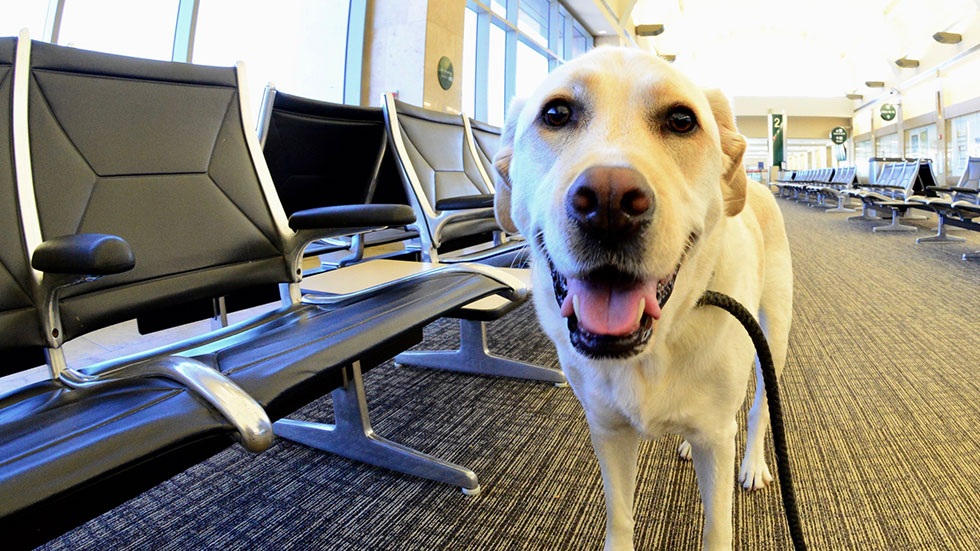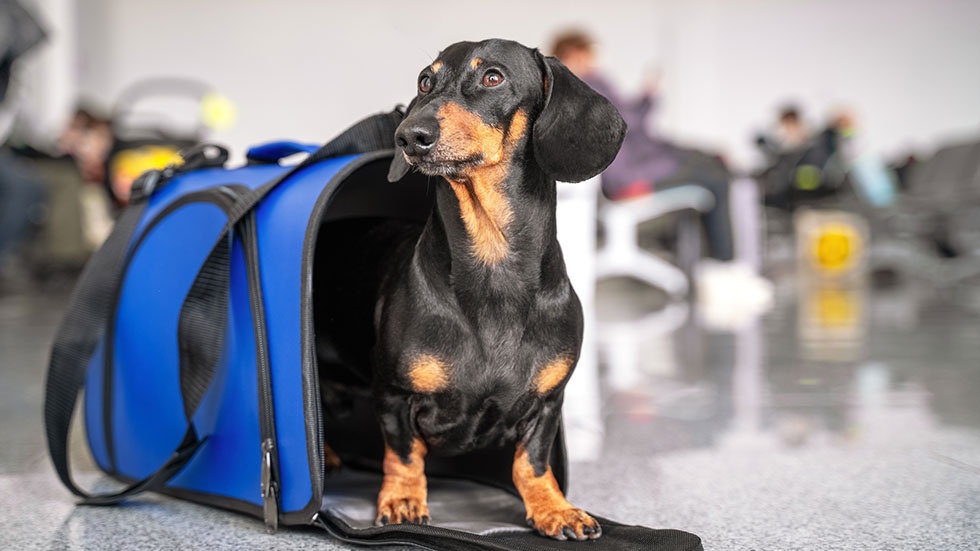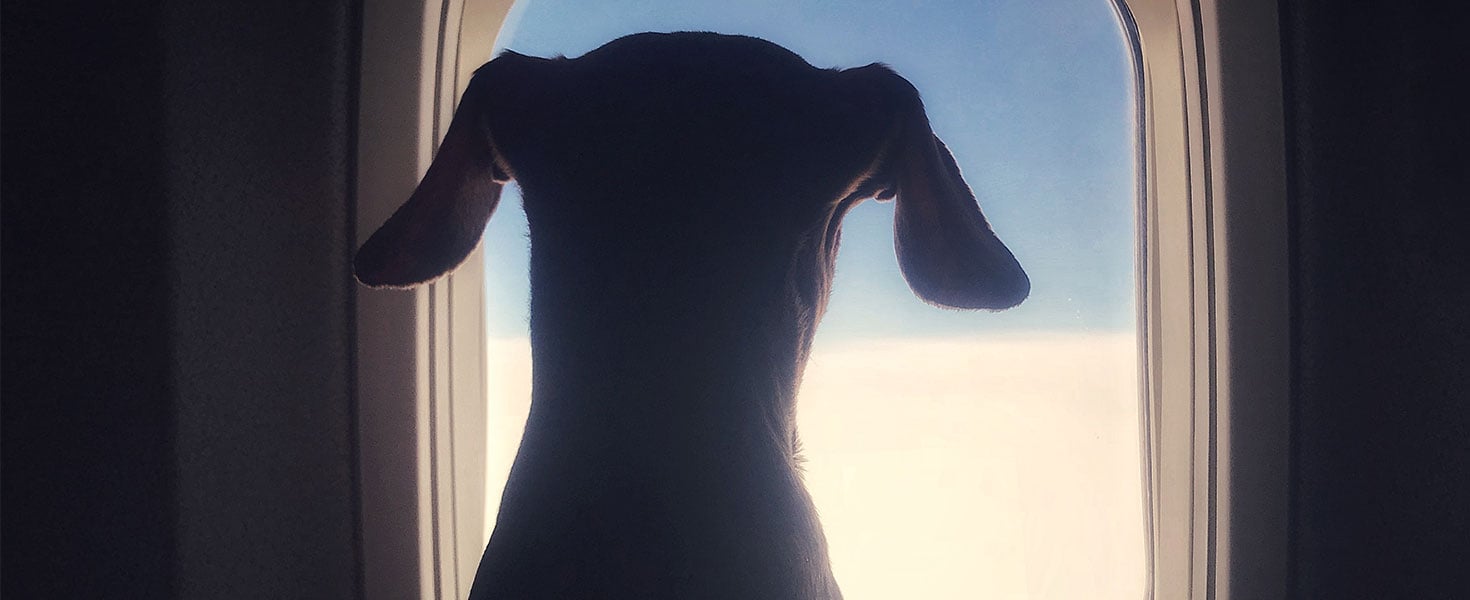
Whether you’re traveling for the holidays or just taking a trip out of town, it’s tough to leave your pets behind. However, flying with a four-legged friend can also be challenging if you’ve never done it before and don’t know what to expect. Here are a few tips about taking to the skies with your dog so that the trip is smoother, easier, and safer for the both of you.

Talk to your vet
Before doing research on airlines, buying tickets, or prepping your dog for flight, it’s important to talk to your vet to make sure your pet is in good enough health to fly. Ensure they are up to date on vaccinations, flea and tick prevention, and heartworm prevention. Then, schedule a second appointment closer to the date of your departure to ensure you have all of the appropriate documentation. Many airlines require a health certificate issued within 10 days of your flight.
Research your options
Not all policies for flying with pets are created equal. For example, some airlines offer special options to pet owners in the first-class cabin while others don’t allow pets on flights at all. Others have weight restrictions for your dog flying in the cabin vs. having to fly in the cargo hold. The length of the flight, destination, and even whether a codeshare is involved are all considerations. You’ll also want to consider the cost of flying with your dog.

Check breed restrictions
The breed of your dog may also determine whether or not they can fly with you. In particular, short-nosed breeds like pugs, Boston terriers, boxers, shih tzus, and bulldogs may all be restricted, due to breathing difficulties or the inability to regulate body temperature.
Know the rules of your destination
Some international destinations (or even some U.S. states, including Hawaii) have complicated processes, quarantine periods, or other animal importation laws that can make traveling with pets more difficult. Some destinations also require all pets to travel in the cargo area, even if they are small. Research both your departure and arrival airports to know exactly what to expect.

Practice with your dog in advance
There are a few things you can do with your dog prior to your flight to get them ready. For example, purchase the airline-approved kennel well in advance and start getting your dog used to being in it. Ensuring your pup is crate-trained and feels comfortable in the crate will help the process go smoothly.
Prepare for the airport
There are a few important things to remember the day of your flight:
- Give yourself plenty of time at the airport. While most airports recommend you arrive at least two hours prior to departure time for domestic flights and three hours prior to international flights, you may want to give yourself more time to take your pet where they need to go and to care for them appropriately. If you’re traveling with a small dog in the cabin, go to the passenger check-in desk where you’ll show your pup’s paperwork. Pay the carry-on fee and get the all-clear, then head through security with your dog. If you’re checking your dog, make sure you attach a current photo of your dog to the carrier and have a current photo on your phone. You’ll leave your dog at the luggage check-in counter and pick them up at your destination's baggage claim area.
- Monitor your dog’s food and water intake. You don’t want your dog to be dehydrated during the flight, but you also don’t want them stressed because they are unable to go potty. Avoid putting water in the kennel as it is likely to spill during flight. Also avoid leaving anything in the crate they can eat and choke on, like food.
- Make sure they get enough exercise. Both physical and mental stimulation is important prior to the flight. Your dog should be tired and content. Note that it’s no longer recommended to sedate your dog because it can cause breathing issues, inability to react, and reduced ability to regulate body temperature. Exercising them ahead of time is the best way to keep them calm and relaxed.
- Know the location of the pet relief areas. Most airports have pet relief areas for pets to potty one last time before getting on the flight. Do this just before you check in (if your dog will be in cargo) or just before going through security or getting on the flight. If there’s no area in the airport, you’ll have to let Fido handle his business outside.
- Keep your pet comfy. Flying is stressful for humans, and it’s even more stressful for pets who are separated from you, in a new place, and don’t know what’s going on. Do what you can to keep your pet calm and comfortable.
- Ask to board early. If you’re taking your pup into the cabin with you, ask if you’re eligible for early boarding. This can give you a few extra minutes to get you and your pet situated before others start boarding.
- Have all health documents handy. Airlines have their own requirements for pets flying in the cabin and in cargo, but you should always have the proper documents within easy reach so you can easily provide them if asked by airline staff.

